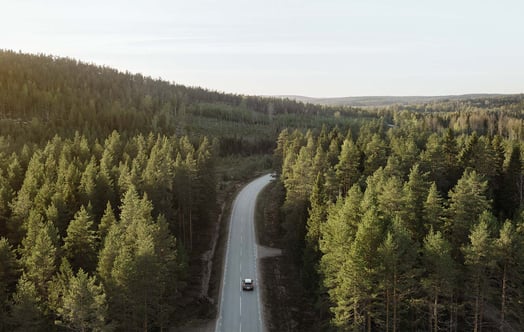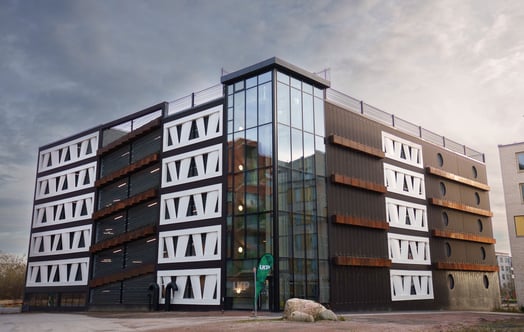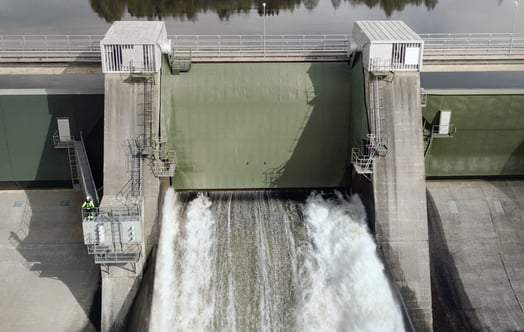In a new high-tech neighbourhood in Lund in Southern Sweden, turbine blades from a decommissioned wind farm will become a very visible part of the façade of an eco-friendly multistorey car park.
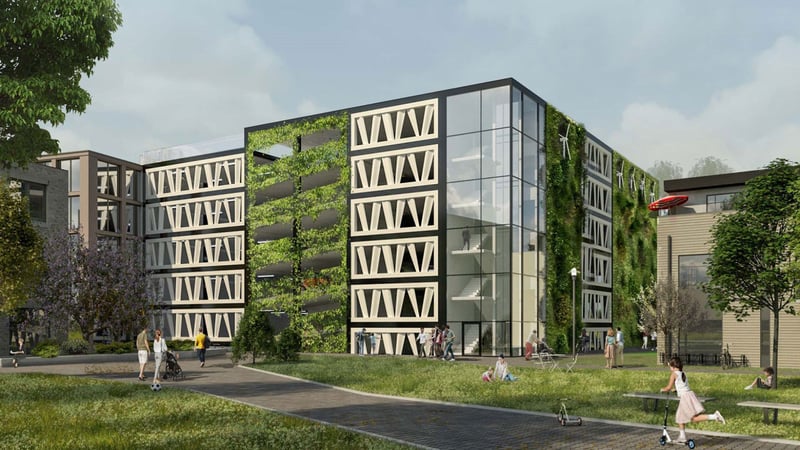
Multi-storey parking in Lund, Sweden. Illustration: Lloyd arkitektkontor.
Wind turbine blades are made to deliver electricity and withstand tough weather for decades. Much like when building an aeroplane, composite materials are used. Materials such as glass fibre, carbon fibre, epoxy resin, balsa wood, metals and various fillers are pressed tightly together in layers, making the blades extremely durable but difficult to recycle.
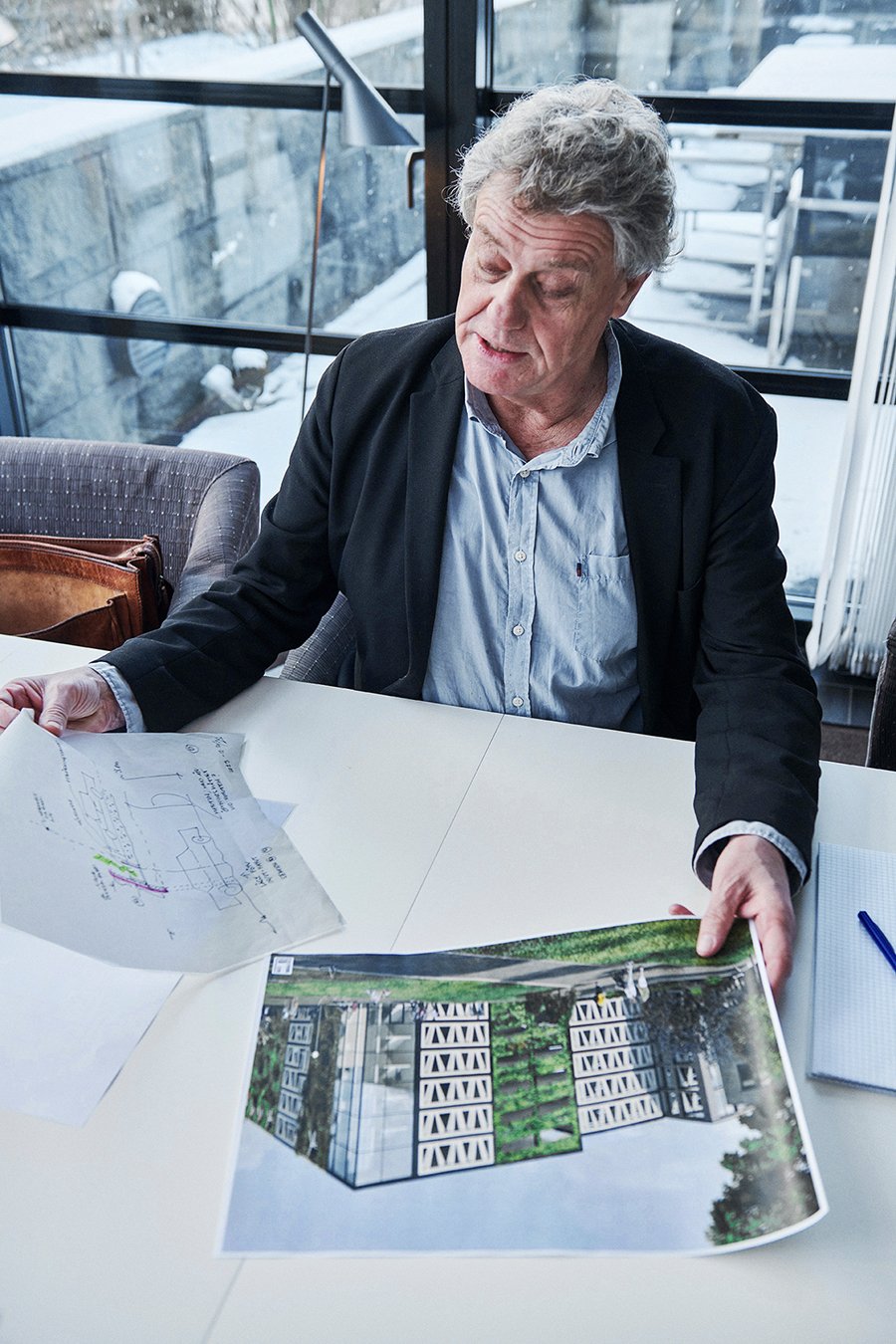
When the city of Lund’s parking company LKP commissioned a parking house for the new neighbourhood Brunnshög in the northeast part of the town, where the world’s most powerful neutron source, the European Spallation Source, is being built, architect Jonas Lloyd at Lloyd's arkitektkontor came to think of an article he had read about the problem of wind turbine blades in landfills.
“To take something that is perfectly functional, arguably one of the best materials in the world – more or less indestructible – and just bury it in the ground is such a terrible waste,” says Lloyd.
Jonas Loyd – architect.
Win-win for environment and climate
Instead, he plans to use turbine blades from Vattenfall’s decommissioned Danish wind park Nørre Økse Sø in the façade to create the curtain walls, or non-structural walls, together with green walls from pollinator-friendly plants. The roof will be covered by solar panels and batteries will store the produced electricity for cars that are typically charged at night.
The sawn turbine blades are perfect for a parking house since the walls are supposed to be open due to explosion and fire risks, says Lloyd, adding that the environmental and climate win is a double one.
The first is getting rid of a very large object – these wings are 23.5 meters long, which is still quite small compared to newer turbine blades especially for offshore wind – in an environmentally friendly way. The other is that other building materials with potentially huge climate footprints such as concrete or steel are not needed.
The design will make the turbine blades an apparent part of the building.
“We wanted to create what is called visible sustainability. That it will be something that really shouts out sustainability. People will walk past and say, 'look at that, they've used wind turbine blades in the façade',” says Lloyd.
Blades can also become frames for solar panels, building panels or skis
Environment and sustainability specialist Gustav Frid has been working on the project on Vattenfall’s side, with Danish wind turbine decommissioning and recycling company Kingo Wind handling the old wind turbine blades.

Gustav Frid - Environment and sustainability specialist.
He says that Vattenfall has already banned putting decommissioned wind turbine blades in landfills, and has set ambitious targets of a 50 per cent recycling rate for turbine blades by 2025 and aiming at 100 per cent in 2030, which it is on track to meet.
“Even if our targets are focusing on recycling, we take a circular approach looking at different strategies in line with the waste hierarchy. Even if a product has reached its end of life from our point of view it can be valuable for someone else in a new application or as material for a new product,” says Frid.
He says that the first option when decommissioning a wind farm is always to look if the turbines can be used somewhere else in their entirety, selling the turbines.
If selling is not an option, Vattenfall is working with reuse and recycling in several projects where the turbine blades are turned into frames for solar panels, flakes used for so called extruded building products such as beams, into isolation material, building panels or even skis.
The fallback option for the company when no other alternative is available – some markets are more mature when it comes to recycling and reuse than others – is cement co-processing. This process involves incinerating materials like plastics and wood to recover energy, leaving the glass fibre to be recycled and used as a substitute for sand in cement production. Carbon fibre, which is a more common material in newer blades and also more valuable, is in general recycled in a separate process.
For the industry to become truly circular, political decisions are needed however, says Frid.
“There are no real incentives to use these products today looking at the legislation. By being active in research projects and pilot projects we can test, learn and show what is possible. In this way, we help pushing the legislation towards more reuse,” he says.
Blades made for easier recycling
By choosing blades that are designed to be easier to recycle, energy companies help turbine makers take steps in that direction. One example was in Vattenfall’s new Hollandse Kust Zuid offshore wind farm in the Netherlands where a new type of recyclable blades were used, although only for some of the turbines due to limited availability.
Methods to disassemble and recycle older blades have also been developed and are getting closer to being commercialised at a large scale.
“We need many different solutions, because there will be huge amounts of material to be handled. In the long term, it may turn out that this or that will be the best way in all respects. But initially we will need many different technologies,” says Frid.
When it comes to the parking house in Lund, not the whole blades can be used. For the other part, the thicker one that is closest to the rotor hub, discussions are ongoing with the Swedish Transport Administration to use them as noise barriers next to motorways or railroads.
Architect Jonas Lloyd is hoping turbine blades can be used in projects such as the now dormant one for high-speed railroad between Sweden’s three biggest cities Stockholm, Gothenburg and Malmö.
“If such large-scale projects with long, long stretches of noise barriers are launched, we can probably get rid of all the wind turbine blades in Europe that are to be decommissioned,” he says.

